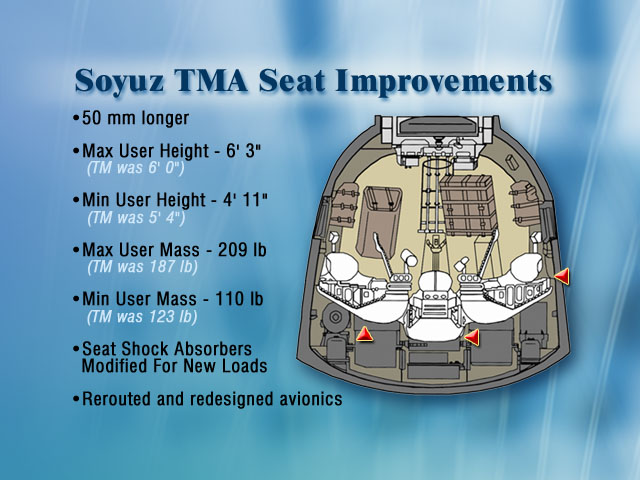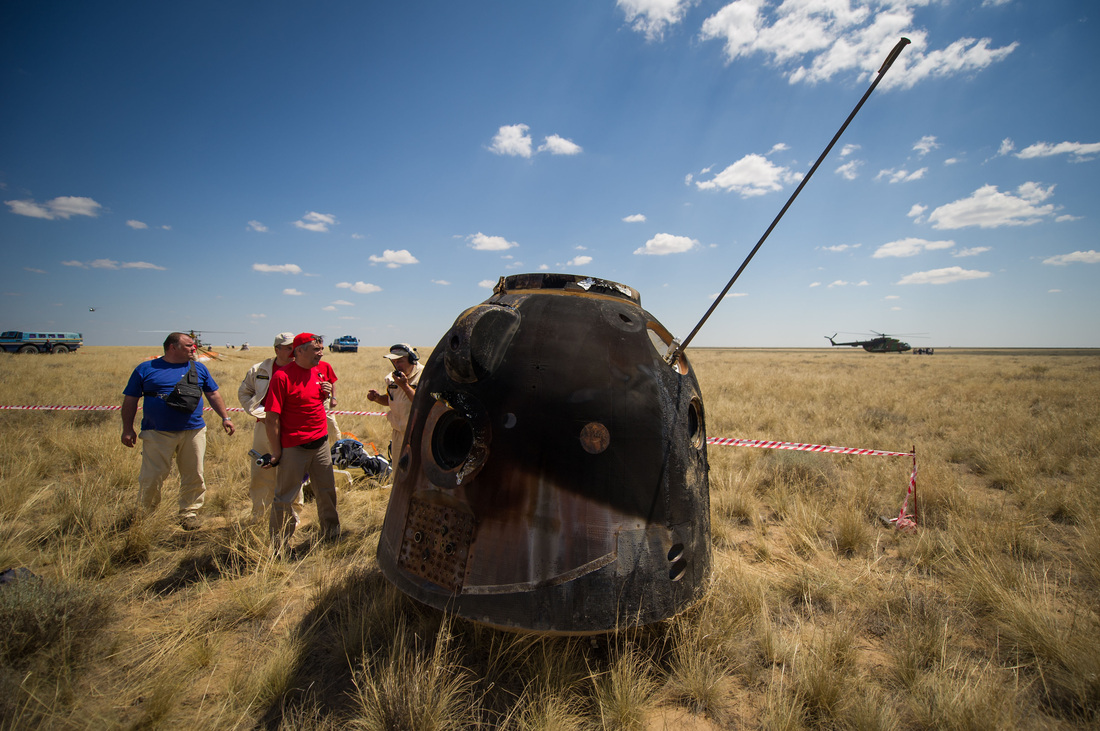Soyuz TMA-M
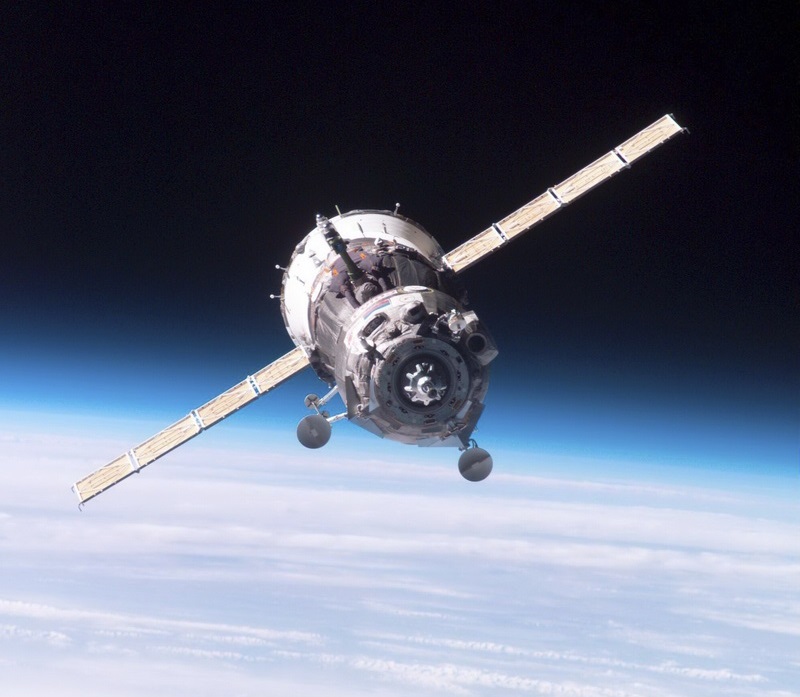
The Soyuz TMA-M is the latest version in the series of Russian Soyuz Spacecraft that are currently used to Transport Crew to and from the International Space Station.
The Soyuz Program dates back to 1966 when the first unmanned flight was performed. The first manned flight was in 1967, but the Cosmonaut on board, Vladimir Komarov, died during the Descent Phase of the mission because the capsule’s parachutes did not open.
Afterwards, more unmanned flights were made before crews were once again allowed to fly the vehicle. The only other fatal Soyuz Flight was Soyuz 11 that suffered a premature cabin depressurization because of a faulty seal – also killing the entire crew of three.
Soyuz Spacecraft have been used for crew transport to and from the Salyut and Mir Space Stations. Now, Soyuz vehicles are dedicated to ISS Crew Transport. Soyuz is manufactured by S.P. Korolev Rocket and Space Corporation Energia, also known as RKK Energia. It is operated by the Russian Space Agency Roscosmos.
The new Generation of TMA-M Spacecraft first flew in 2010 and features various improvements over the previously used TMA Version. Soyuz TMA-M Spacecraft are launched aboard the Soyuz FG Launch Vehicle from Site 31 at the Baikonur Cosmodrome, Kazakhstan.
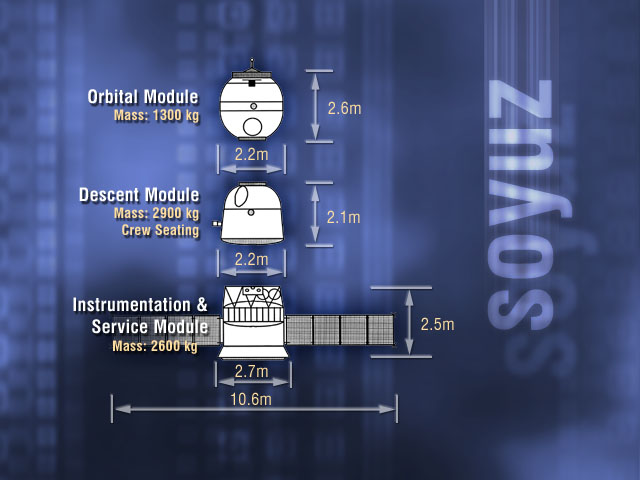
| Type | Soyuz TMA-M |
| Manufacturer | RKK Energia |
| Length | 7.48m |
| Diameter | 2.72m |
| Launch Mass | 7,150kg |
| Span | 10.6m |
| Modules | 3 |
| Habitable Volume | 8.5m³ |
The Soyuz Spacecraft consists of three Modules, the Instrumentation Module, Entry Module and Orbital Module. In total, the spacecraft has a launch mass of 7150 Kilograms and it is 7.48 meters in length with a maximum diameter of 2.72 meters. A fully deployed Soyuz Spacecraft in orbit has a span of 10.6 meters.
The three modules are equipped with separation mechanisms as only the entry Module is outfitted with an ablative heat shield to survive re-entry. The three modules separate after the deorbit burn just before the vehicle hits the atmosphere. While the Entry Module safely enters the atmosphere, the other two modules burn up during entry. The Soyuz Spacecraft is certified to stay in orbit for 6 months docked to the Space Station.
Orbital Module
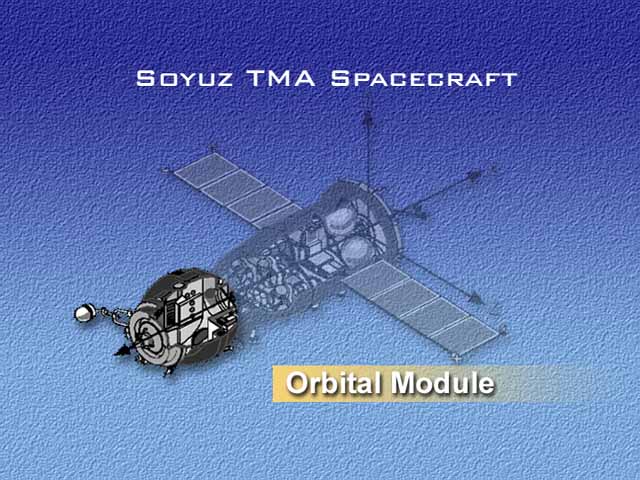
| Length | 2.98m |
| Diameter | 2.26m |
| Launch Mass | 1,300kg |
| Habitable Volume | 5m³ |
| Attitude Control | 4 DPO Thrusters |
| Rendezvous | KURS |
The Orbital Module is located on top of the two other sections of Soyuz. It is 2.98 meters long and 2.26 meters in diameter. It has a total mass of 1,300 Kilograms and offers a habitable volume of 5m³. During Ascent, the Orbital module is sealed from the Entry Module by closing and latching the inner hatch. Once in Orbit, the crew opens the hatch and can use the BO, as the Orbital Module is also known, as habitable module. It is used to carry cargo and equipment to space and houses equipment required to allow the crew to live in space.
BO contains a toilet and communication equipment. On the top side of the section is the docking assembly of the Spacecraft that features navigation antenna systems and the actual docking port with docking probe and associated lights and sensors. The Docking Interface features the KURS hardware that is used for the automatic rendezvous procedure. Also, the docking interface includes electrical and communications systems connectors for power transfer from ISS and communication relay.
A side hatch on the module allows crews to enter the capsule at the launch pad and during pre-flight operations. The Life Support System can support the crew for 30 person days providing Oxygen Generation and Carbon Dioxide Scrubbing Capabilities. Also, the atmosphere aboard the Soyuz can be topped up with Nitrogen from storage tanks to keep the capsule pressurized.
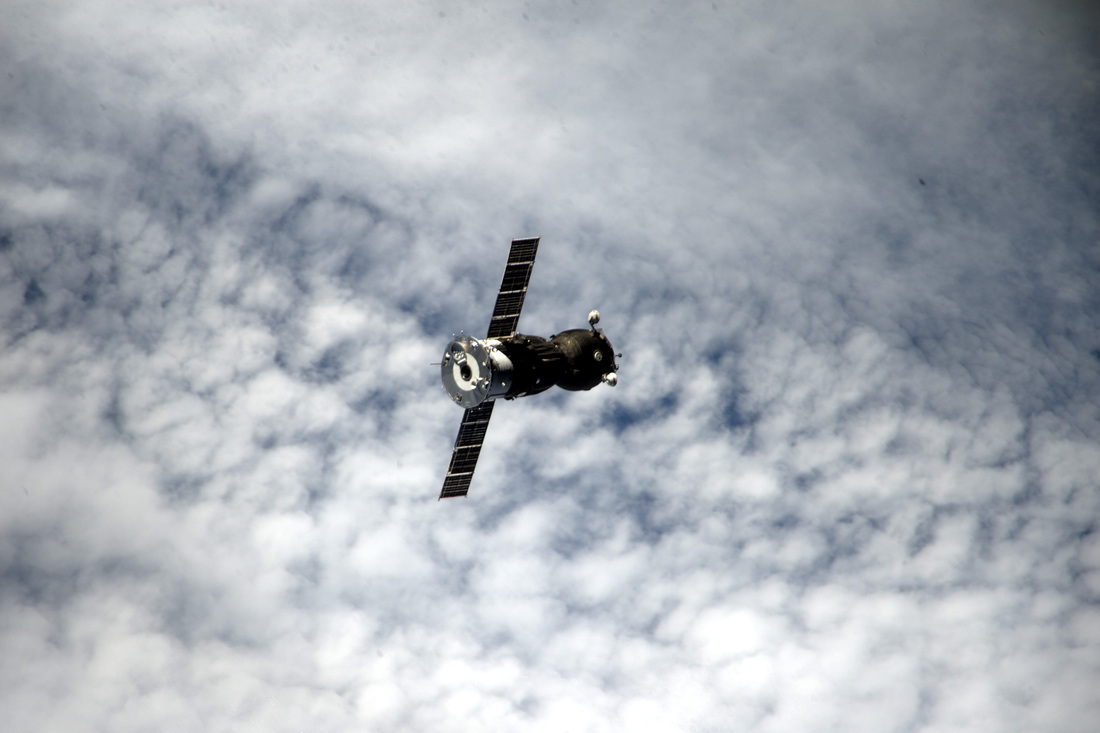
Entry Module
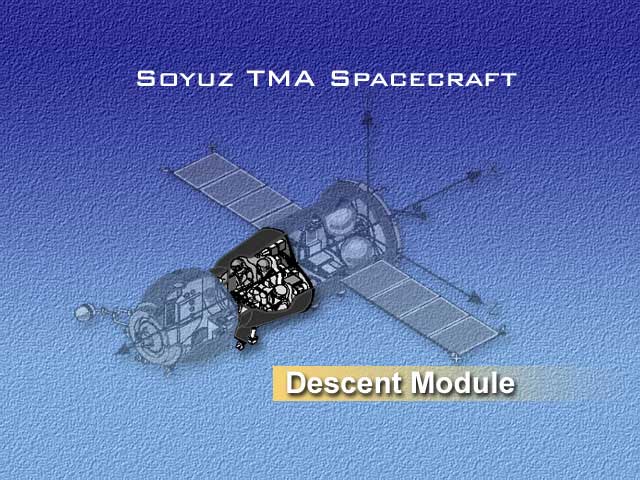
| Length | 2.24m |
| Diameter | 2.17m |
| Launch Mass | 2,950kg |
| Habitable Volume | 3.5m³ |
| Thermal Protection | Ablative Heat Shield |
| Attitude Control | 24 Thrusters |
| Propellant | Hyydrogen Peroxide |
| Landing | Parachutes |
| Pilot Chute | 4.5m² |
| Drogue Chute | 16m² |
| Main Chute | 518m² |
| Landing Engines | 6 |
| Landing Speed | 2-4m/s |
| Cargo Downmass | 100kg |
| Flight Computer | KSO 20M |
The Entry Module is located between the two other sections and is 2.24 meters long and 2.17 meters in diameter. it has a total mass of 2,950 Kilograms and offers 3.5m³ of habitable volume. The Entry module houses vehicle control systems and crew seats. The crew is isolated in the Entry Module for launch and landing.
Three custom made Kazbek Seat Liners are installed inside the Module that are specially made for each individual crew member. A shock absorbing system is installed on the crew’s seats to dampen the impact the Soyuz experiences during landing.
The KS0 20M computer aboard the entry module is the primary flight computer after module separation taking the descent section of the vehicle through the re-entry and landing portion of the flight. It is also the prime computer for Launch and Ascent Aborts. The Entry Module has an attitude control system consisting of 24 Hydrogen Peroxide Thrusters for making maneuvers in orbit and during entry.
Also, it is outfitted with the spacecraft’s fully redundant parachute system consisting of a pilot chute that is deployed first after computers issue the parachute opening command during entry. The Pilot chute is followed by a Drogue Chute (16m²) and the Main Chute (518m²) to slow the vehicle down to a safe landing speed. In the final moments before landing, the Entry Module separates from its heat shield that is used to protect the vehicle during the re-entry process. This exposes the six Solid-Fueled Soft Landing Engines that are fired just a split second before landing to slow the vehicle down to its final landing speed. A fast-opening parachute system is also installed on the module to support Launch Aborts.
100 Kilograms of cargo can be loaded into the entry Module for transport back to Earth. The Entry Module of the Soyuz can also be used as an Airlock when the hatch to the Orbital Module is closed. Spacewalkers would exit and ingress through the side hatch.
Instrumentation Module
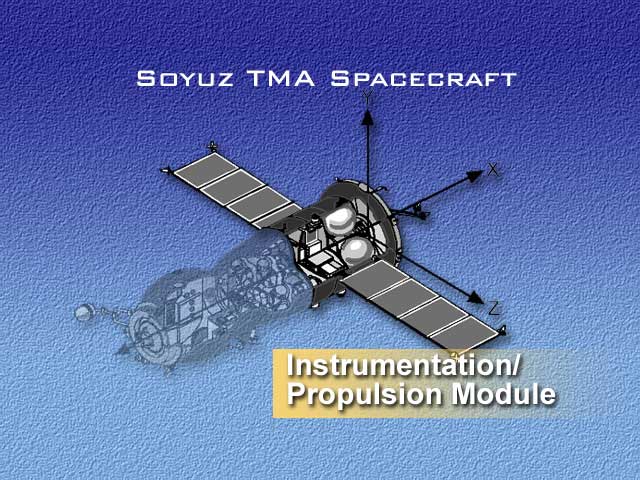
| Length | 2.26m |
| Diameter | 2.72m |
| Launch Mass | 2,900kg |
| Habitable Volume | None |
| Main Engine | SKD (Redundant) |
| Trust | 2,942N |
| Attitude Control | 28 DPO Thrusters |
| Thrust | 26.5N/130N |
| Oxidizer | Nitrogen Tetroxide |
| Fuel | Unsymmetrical Dimethylhydrazine |
| Propellant Mass | 800kg |
| Power Generation | 2 Solar Arrys |
| Span | 10.6m |
| Area | 10m² |
| Power | 1000W |
| Flight Computer | TsVM-101 |
The instrumentation or Service Module is located underneath the other two modules and houses equipment necessary to support the vehicle during its mission. It has a liftoff mass of 2,900 Kilograms, is 2.26 meters in length and 2.72 meters in diameter.
A pressurized container includes systems for thermal control, electric power supply, communications, telemetry and navigation. The unpressurized portion of the Instrumentation Modules contains the Main Engine and the liquid-fueled propulsion system. The Propulsion System is used for attitude control maneuvers, Rendezvous and Orbit Adjustments as well as the deorbit burn.
SKD, the Soyuz Main Engine, provides a thrust of 2,942 Newtons. The entire Soyuz Attitude Control System is comprised of 28 DPO Thrusters. Two clusters of 14 DPO Thruster are mounted on the spacecraft with 12 of these jets providing 26.5 Newtons of Thrust and the remaining 16 providing 130 Newtons. The Propulsion System uses Nitrogen Tetroxide as Oxidizer and Unsymmetrical Dimethylydrazine as Fuel. A total of 800 Kilograms of propellants are carried aboard the SM Tanks. Tank Pressurization is accomplished with high-pressure helium.
The Service Module also includes the power generation system consisting of two deployable solar arrays and batteries. The instrumentation module is outfitted with the main flight computer that is in charge of all aspects of the Soyuz Mission up the point of Module Separation when the KSO 20M Computer of the Entry Module takes over.
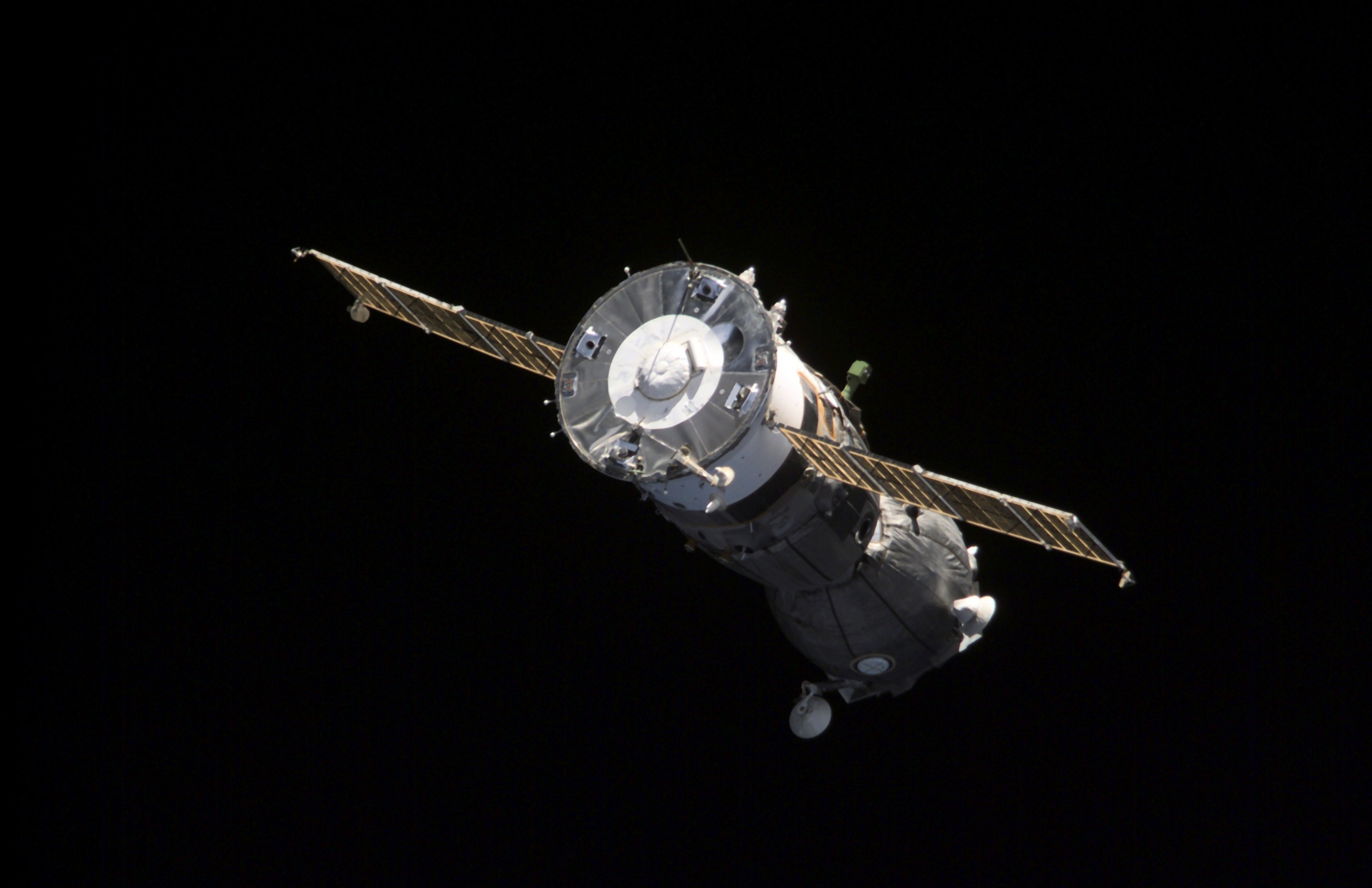
Launch Abort System
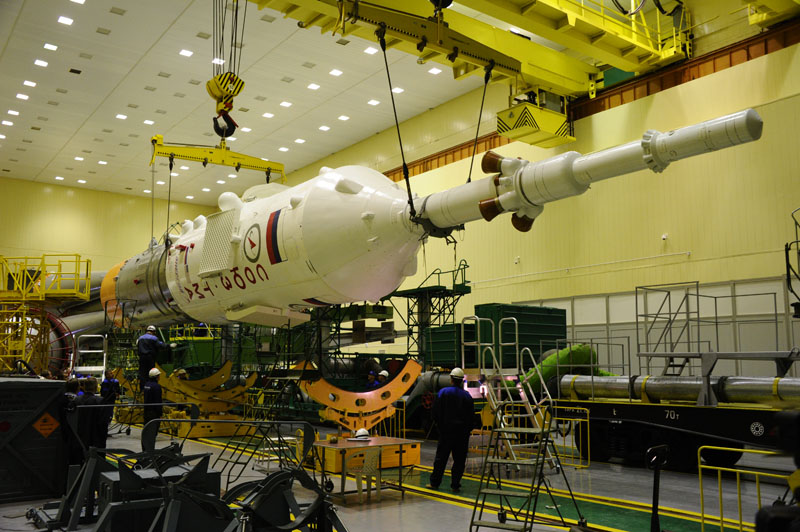
Soyuz FG features Launch and Ascent Abort Capabilities during the complete ascent phase. In the early portion of the mission and while sitting on the Launch Pad, the crew can be evacuated by the use of the SAS Launch Escape System. On top of the Soyuz Rocket is a Launch Escape Tower that is used for Launch Aborts prior to liftoff and during the first 157 seconds of the flight.
The abort can be triggered by on-board computers and manually via radio signals. Events that cause an immediate launch abort include loss of control, premature booster stage separation, loss of pressure in the combustion chambers, lack of velocity and loss of thrust. When the abort command is issued, three struts engage in the lower structural ring of the Soyuz Entry Module (The Crew is in the Entry Module for Launch and Landing with hatches to the Orbital Module closed and latched). These struts provide a stable interface with the Payload Fairing. At that point, the two Upper modules of the Soyuz are separated from the Instrumentation Module that remains attached to the Launcher.
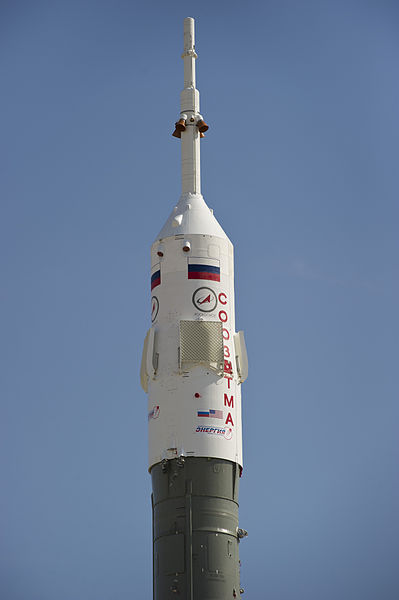
At the same time, the abort motors mounted on the Launch Escape Tower ignite and the spacecraft under the Payload Fairing is carried away from the launch vehicle. The burn has a duration of up to six seconds. The abort motors provide 723 Kilonewtons of thrust. After burnout of the escape motors, the descent module separates from the Orbital Module and the Shroud before firing engines to drop out of the Fairing. The Entry Module deploys fast-opening parachutes and the Module’s heat shield is jettisoned to expose the Soft Landing Engines. The capsule executes a nominal landing.
Should the abort occur while the vehicle is still at the pad, the SAS can lift the capsule to an altitude of 1.5 kilometers causing it to land 3 to 4 kilometers away from the rocket. A minimun altitude of 850 meters is required to achieve full parachute deployment for a nominal landing. The minimun landing distance from the launcher is 110 meters. During the abort scenario, crew members experience up to 10 G’s.
At T+157 seconds, the SAS and Payload Fairing is jettisoned. After that, a variety of abort modes are available for the Soyuz Spacecraft. Depending on the abort scenario, different mechanisms are used to separate the Soyuz Capsule from the Rocket. After separation from the Launcher, the Soyuz conducts a commanded Module Separation and the Entry Module uses its attitude control system to place the vehicle in the correct entry attitude.
The abort trajectory that takes the Soyuz to a landing point somewhere downrange the ground track, largely depends on the timing of the failure. The later an abort occurs in the ascent, the higher the G load the crew and vehicle experiences. For an abort 400 seconds in the flight, up to 21Gs occur on the way back to Earth. After Entry, the Soyuz performs nominal landing operations to bring the crew back to Earth. All abort scenarios are considered to be survivable by the crew.
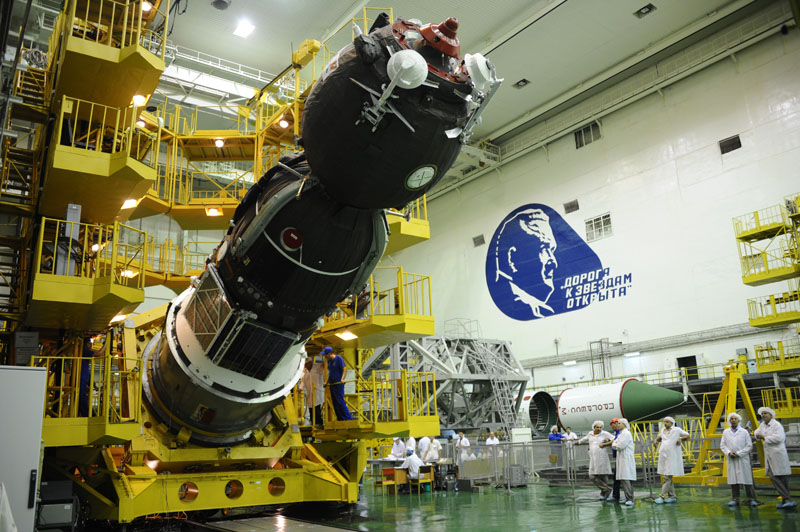
Soyuz Flight Profile
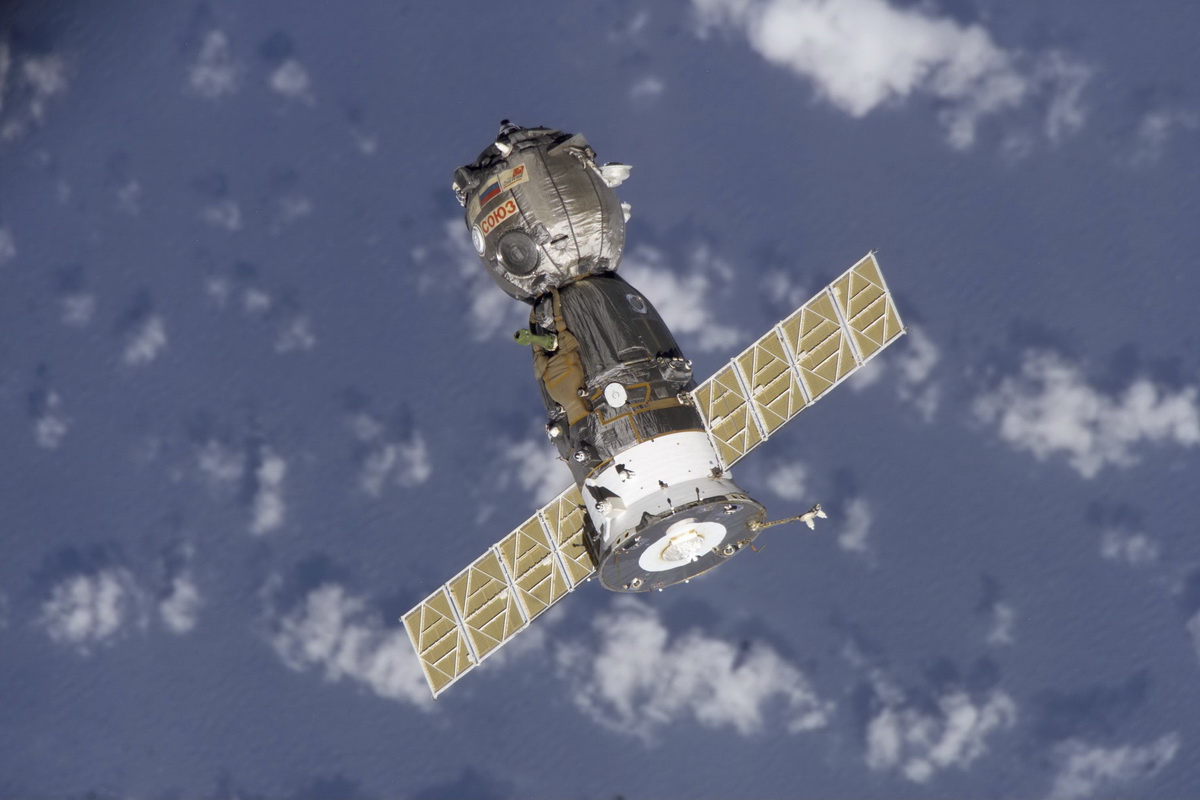
After being delivered to Low Earth Orbit by the Soyuz FG Launch Vehicle, the Spacecraft deploys its solar arrays and communication antennas to begin on-orbit operations. After orbital insertion, the Spacecraft starts two days of Rendezvous Operations to link up with the Space Station including several main engine burns to raise its orbital altitude and modify its trajectory.
Once reaching the vicinity of the Space Station, the KURS automated docking system takes over. The Vehicle makes a flyaround of ISS to align itself with its docking port. Flyaround distance is about 100 meters. Once being alignd with the docking port, the Soyuz initiates a period of Stationkeeping to give mission control a chance to asses alignment and vehicle systems before final approach is initiated.
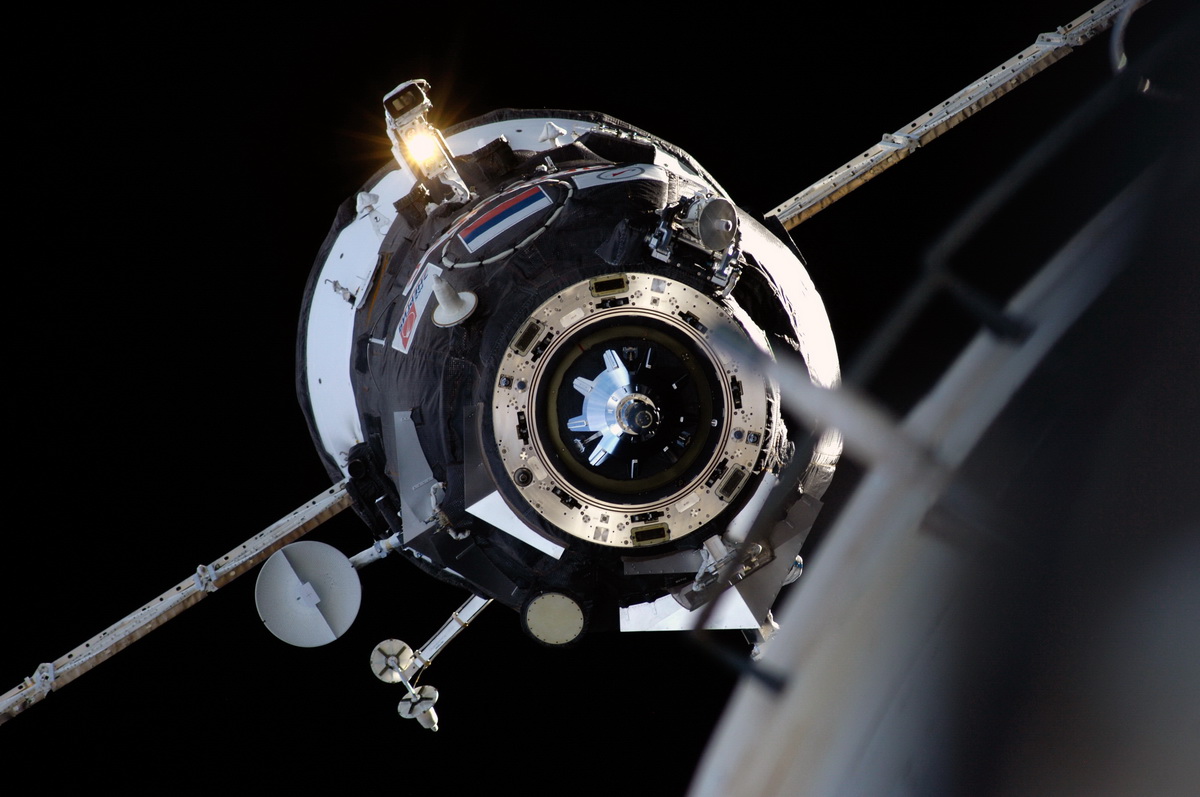
All aspects of the Rendezvous and Docking are controlled in automated mode, however the commander of the Soyuz Spacecraft is ready to assume manual control and conduct a manual approach and docking should there be any problems during the automated docking sequence. After initial contact and capture, a hard mate between the two docking interfaces is formed and a 1-hour leak check operation kicks off. Hatches are opened and the crew’s and Soyuz’ Stay aboard the Station begins.
During the docked phase, most of the onboard systems of the spacecraft are deactivated. During the long duration mission, the Soyuz is tested periodically and the crew checks their Kazbek Couches and performs regular landing simulations. Soyuz can stay docked to the Station for up to six months, however modifications are under development to increase docked time to one year. When the crew gets ready to depart the station, the Soyuz is activated and hatches are closed. The leak check operation is repeated while the crew also closes the Entry Module hatch and ingresses the Sokol Launch and Entry Suits before getting strapped into their seats.

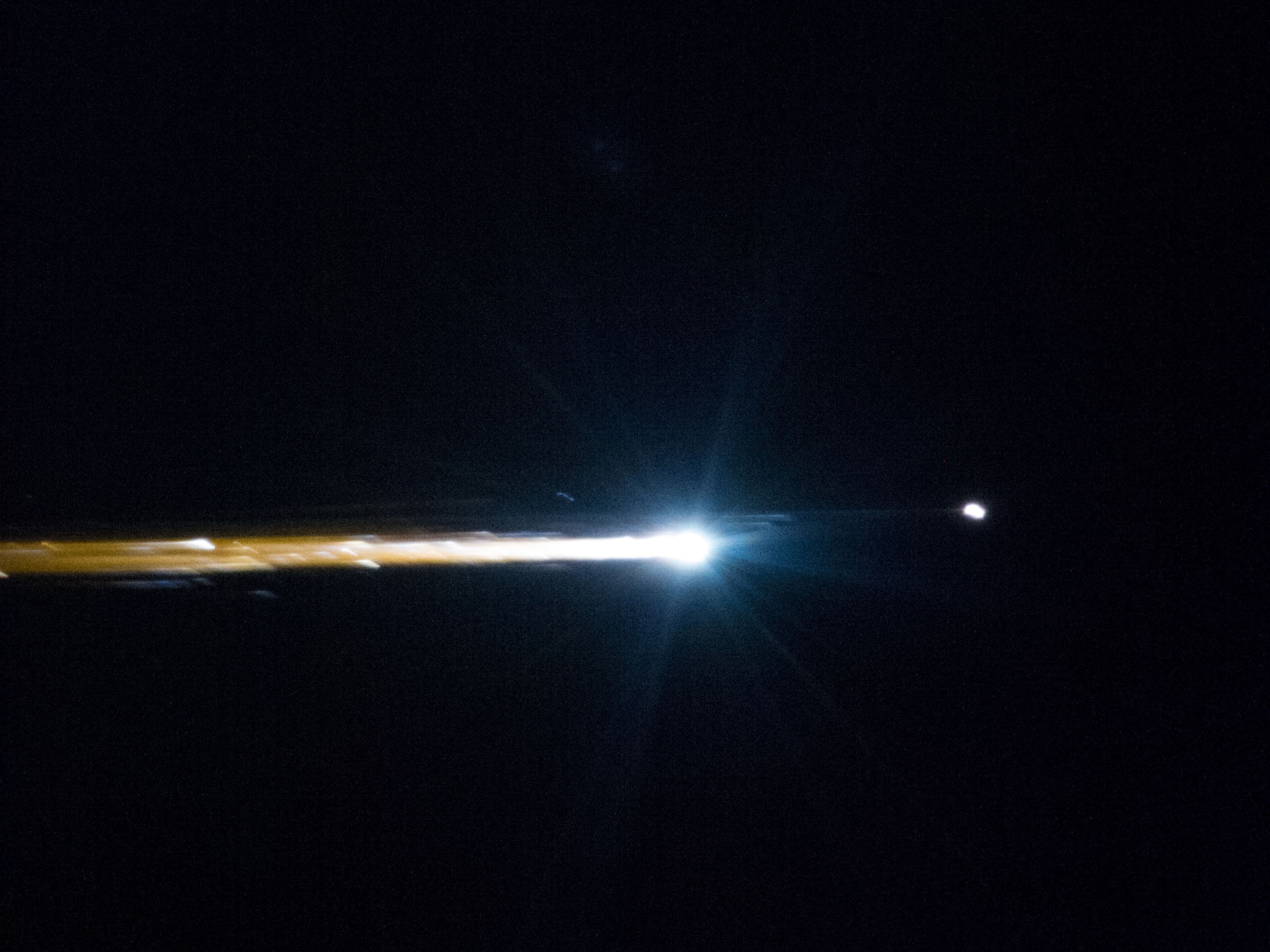
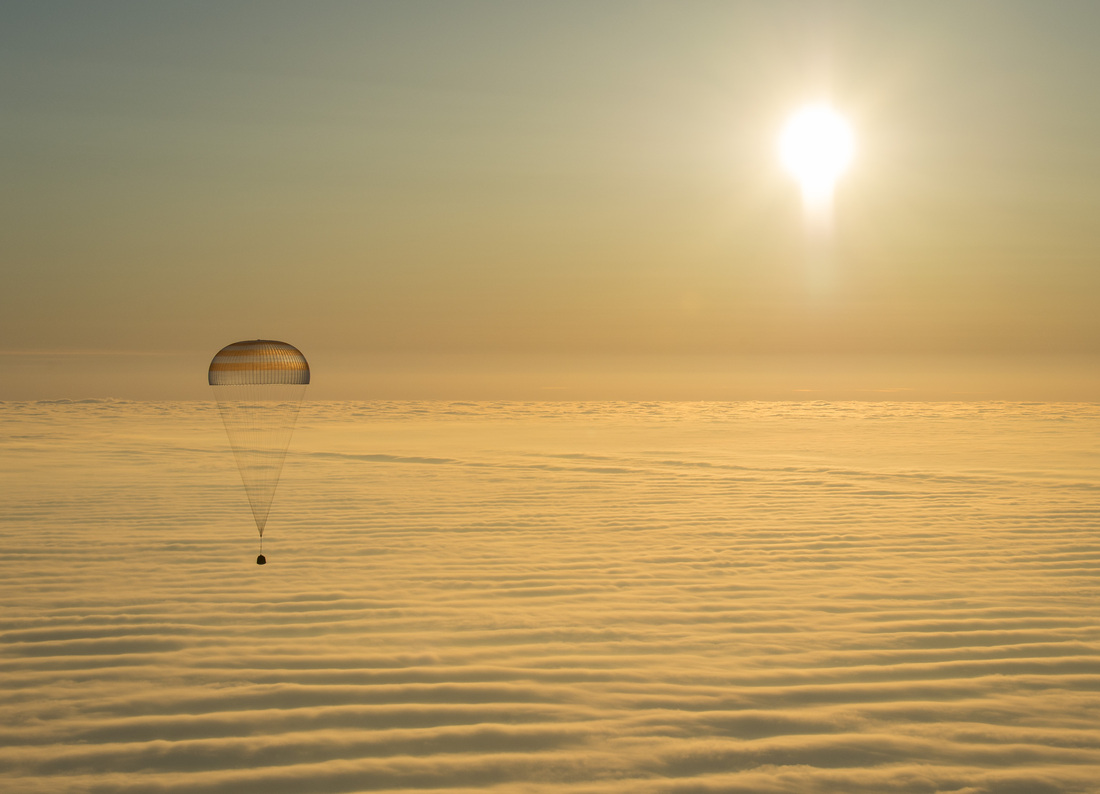
Undocking is accomplished by opening hooks and latches that were used to form the hard mate between ISS and Soyuz and initiating springs that push the vehicles away from each other. At a distance of 20 meters, the Soyuz performs a 15-second separation burn to leave the vicinity of the Station. A period of several hours of free flight follows during which the vehicle retreats to a distance of 12 Kilometers behind ISS. At that point, the Deorbit Burn is conducted by igniting the SKD Main Engine to slow the vehicle down by about 115 meters per second, just enough to place it on a re-entry trajectory.
Minutes from Entry Interface, the three Soyuz Modules are pyrotechnically separated and the Entry Module maneuvers to its Re-Entry Attitude. During the entry process, the vehicle is protected by its ablative heat shield. At an altitude of about 9 Kilometers, the Pilot Chute opens and deploys the Drogue Chute that slows the vehicle from 240 meters per second to 90m/s. At an altitude of 7.5 Kilometers, the Main Chute is opened and slows the vehicle down to 6 meters per second. While flying under the main chute, the Soyuz transitions from a nearly horizontal flight to a vertical descent.
Also, the heat shield is jettisoned and the propellant tanks are vented. Dropping the heat shied exposes the soft landing engines and the landing radar to provide navigation data.
Just a split second before landing, the Soyuz ignites its six solid-fueled Soft-landing Engines to dampen the impact. Landing speed is 3 meters per second. Inside the vehicle, the Kazbek Seat Liners have a built-in shock absorbing system to dampen the impact load. After landing, recovery forces open the Entry Module Hatch and extract the Crew. Landing occurs in the Kazakh Steppe.
